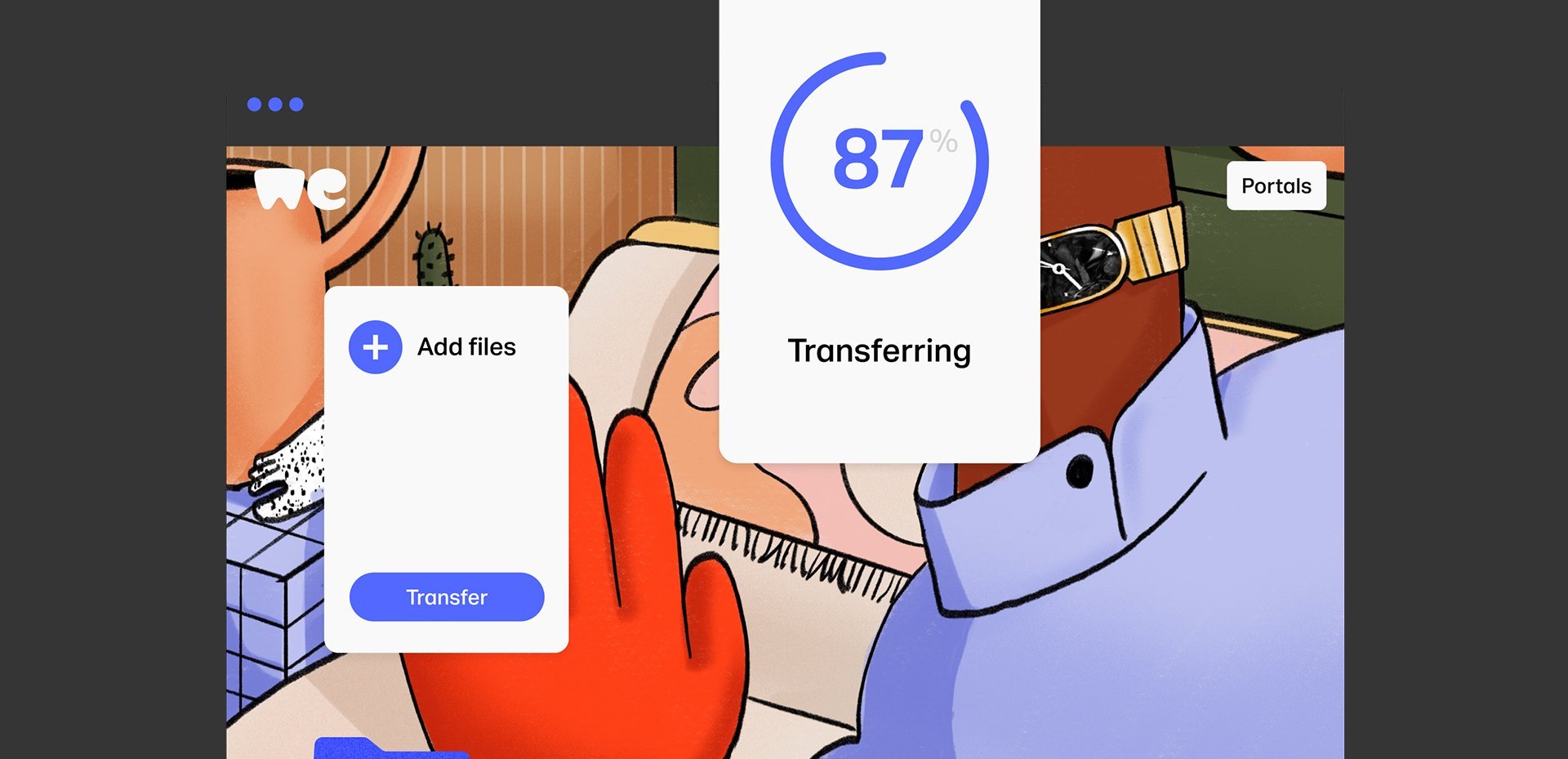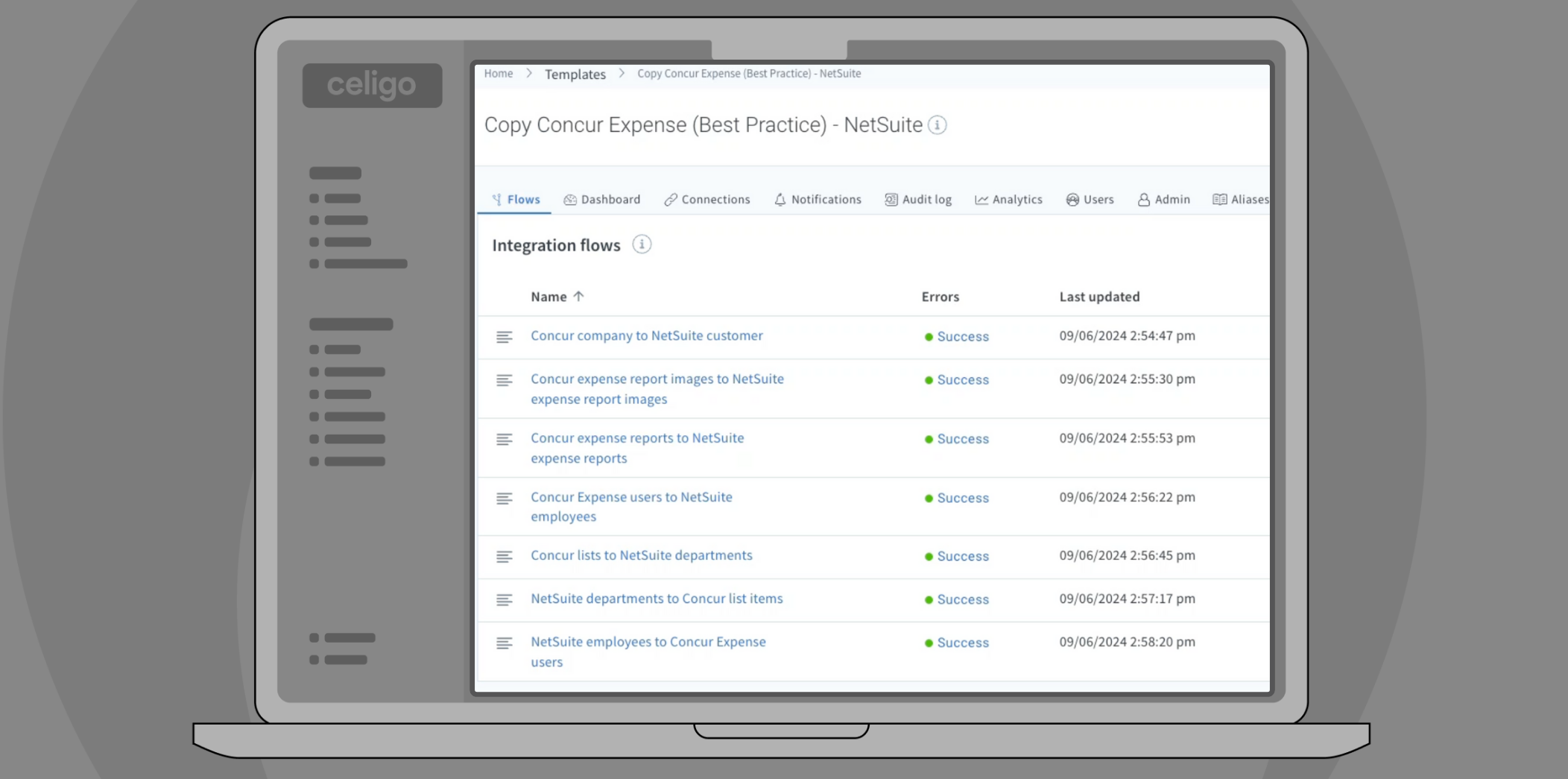
WeTransfer, an Ecosystem of Creative Productivity Tools, Develops a Scalable Integration Framework Across the Enterprise With Celigo

“The mission for my team is to eliminate any points of failure in our architecture. I want to draw a structure. Clean up the stack. Connect what’s connectable. Replace what’s not scalable. Make things auditable; that’s my dream. And I think the whole mission of Celigo marries quite well into my ambitious plans.”

Katia Malashyna-de Jong
Financial Systems Director,
WeTransfer
SaaS
WillemFenengastraat 19, Amsterdam
Multilayer
Celigo Platform with:
Amazon S3, Paypal, Stripe, Amazon Redshift, Salesforce – NetSuite, Workday, Apple Pay, and Google Pay
About
WeTransfer B.V is a $100M+ internet-based computer file transfer service based in the Netherlands. WeTransfer was created to enable large files to be shared; since 2009, the company has evolved, branching into advertising and premium subscription dual revenue model, customer base largely within media and creative industry.
WeTransfer has seen exponential growth into an ecosystem of creative productivity tools. Moving beyond large file transfers, they are building out an intuitive platform, positioning themselves as an all-in-one tool for creatives. You can transfer your data, review your data and present your data – all in one platform.
Background
Katia Malashyna-De Jong, joined the WeTransfer team in 2021 as their Financial Systems Director. In addition to managing their financial tools and architecture, Katia manages the enterprise information systems, sales systems, HR systems, and IT services.
The company has been growing exponentially, year over year. The finance team has quadrupled within the last two years. With their rapid development, they were experiencing a SaaS sprawl; different departments acquired different applications. They had over 200 paid SaaS applications, which were not always well integrated across the business. This resulted in a lot of duplicate/manual effort required in most of the corporate departments, including finance, HR, and sales. With over 400 employees, their technical resources are still limited, with no team dedicated specifically to corporate systems integration.
The challenge
When Katia first joined WeTransfer, she noticed that most SaaS applications had been purchased in an ad-hoc manner. The team acquired many tools that did not interact properly with each other.
As a finance professional, Katia felt this most acutely with Salesforce and NetSuite. The company had spent hundreds of hours over two and a half years building an internal set of tools and integration between these two applications, which just didn’t work properly. The financial team struggled with managing disparate data resulting in many hours of manual data entry every month.
“There was no reliable data integration. Data was never successfully synced two ways. The NetSuite to Salesforce integration never worked,” said Katia.
With so much manual reconciliation, the financial books were not getting closed promptly, and they could not complete the billing cycle on time. “For example, if an opportunity field was updated in Salesforce, it would not automatically update in NetSuite. We had a revenue accountant solely working on manual transaction filing,” says Katia.
They also had completeness issues with the financial data pipeline for payment data (from PayPal and Stripe) and how financial EPM and ERP tools interacted with all of these systems.
“With the previous architecture, talking to the auditors and explaining the financial systems and how each system communicated with each other was never easy – because of the complexity of architecture and excessive manual processes,” says Katia. “As a result, auditors could never rely on our systems controls.”
As the problem grew, WeTransfer immediately started looking for iPaaS solutions. Because of the team’s limited technical resources, they knew they needed an integration solution that was powerful yet intuitive and easy to use.
The solution
WeTransfer signed a contract with Celigo within a month of procurement, selecting it over Boomi and Mulesoft. They selected Celigo for its powerful functionality, ease of setup and use, intuitive design, and library of prebuilt integrations.
Celigo’s pricing model was a deciding factor as well. “We started with five endpoints. Even though we’ve connected all five between each other, we don’t pay by the flow; we still pay only for five endpoints,” said Katia. “That was quite attractive for me because then I can make my architecture as creative as I want.”
While the team purchased five endpoints, the team first tackled the Salesforce-NetSuite integration challenge, given the acuteness of the pain point.
“We selected the self-paced implementation for Salesforce-NetSuite,” said Katia, describing Celigo’s guided implementation program. “We are really happy with that decision because it’s documented quite well.”
As the team quickly built their first integration, the intuitive nature of the platform inspired them to expand Celigo’s use to many other areas in the business, including fulfillment data integrations, data warehouse, Stripe, Paypal, and more. If they encountered flows that were particularly complex, they would seek additional help from a small contractor, Multilayer, who were able to provide additional Celigo support as needed.
Soon, the team expanded to an additional 12 endpoints, including additional data warehousing and project management use cases.
“With Celigo, it is possible to connect and automate data from a data warehouse without the need for a data engineer,” said Katia.
Bottom line
The original Salesforce-NetSuite integration was a huge success for WeTransfer. Not only was the complete Quote-to-Cash automation working immediately, but it also accelerated time to close while significantly reducing FTEs focused on manual data entry. The revenue accountant can now work on core tasks in the finance department, work with sales operations on process improvements, and no longer worry about completeness issues associated with the integrations of the sales and financial systems.
“Finally, the sales teams had the invoice and payment status data in Salesforce they needed after asking for this functionality for two years. Everything that we promised to the users just worked. It was a huge success,” said Katia.
More importantly for Katia (and that finance team) was the reduction in risk posed by the implementation of ad-hoc systems.
“To me, this is about saving us a lot of capacity and headache by building additional systems controls and reducing financial statements risks,” said Katia. “With our previous architecture, we could not demonstrate to our auditors high-quality data flows between sales and finance, and as a finance leader, I can’t afford that.”
“The mission now for my team is to eliminate any points of failure in the architecture. I want to draw a company-wide systems architecture. Clean up the stack. Connect what’s connectable. Replace what’s not scalable. Make things auditable; that’s my dream. I think the whole mission of Celigo marries quite well into my ambitious plans,” she concluded.
The change with Celigo was noticeable right away. For the sales team to have financial data after they asked for it for two years, and that it actually went comparatively easy, was a wake-up call for us. Everything that we promised to the users: it just worked. It was a huge success.
Katia Malashyna-de Jong,
Financial Systems Director,
WeTransfer



